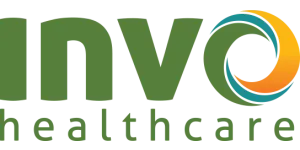Program Overview
Driven by the increased need from our District partners to help identify and prioritize initiatives toward improving student behavior, Invo has developed the Assessment of the Behavioral Learning Environment (ABLE).
Invo's ABLE helps leaders and educators prioritize strategies they can use to improve positive behaviors, increase student engagement, and reduce disruptions. It integrates Positive Behavior Intervention and Supports (PBIS) with evidence- based environmental structures and classroom management best practices known to minimize disruptive behavior and promote positive.
18 Week Outcomes
lnvo's Assessment of the Behavioral Learning Environment prioritizes new classroom strategies that will most impact student behavior and engagement specific to that classroom. lnvo coaching supports educators to implement new strategies, with outcomes are evident within 18 weeks.
63% Increased student participation in whole group instruction
90% Reduced disruptive behavior in whole group instruction
100% Increased student participation in small group instruction
Core Elements
lnvo coaches with ABA backgrounds observe classrooms, looking for indicators/look-fors to determine the extent to which educators are operationalizing 23 best-practice strategies in three areas.
ABLE identifies patterns and trends, so leaders and educators can make decisions about impactful professional learning and best practice strategies that will improve positive behaviors, increase student engagement, and reduce disruptions specifically in their schools and classrooms.
Class-Wide Support
Classroom behavior structures and expectations are foundational to positive learning outcomes. Included in our class-wide support strategies are:
- Classroom rules/expectations are posted, and aligned to school expectations
- Visual cues are visible including schedules, timers, reward systems, and behavior prompts
- Many more including routine, reinforcement, and ratio supports
Ecology
Interaction with materials, classroom environments, and the physical layout of the classroom are assessed, including:
- Classroom is physically safe and clear of hazardous items
- Key items are safely managed to prevent distraction
- Additional strategies include area designation, materials accessibility, and more.
Teaching & Learning
At the core of what we all do is how effectively we're teaching and aiding in the learning process, observing:
- Task difficulty and the relationship between difficulty and relevance
- Visual and oral support structures that work together
- Also observing material variance, pace, choice and more.
Coaching to Improve
Our coaching model is collaboratively developed by educational leaders, teachers, and ABA professionals. Our coaching model includes collaborative sessions to support peer-to-peer learning, 1 :1 sessions to meet each educator where they're at, and classroom observations and interactivity to support educators in their context and in the student's natural environment.
ABLE is not evaluative. ABLE identifies patterns and trends, so leaders and educators can make decisions about impactful professional learning and best practice strategies that will improve positive behaviors, increase student engagement, and reduce disruptions specifically in their schools and classrooms.
ABLE is Designed to:
➤ Identify strengths and areas for growth related to school-wide and classroom-based environmental influences on student behavior and related practices.
➤ Provide objective data to school teams regarding existing environmental influences on Behavior, practices, and supports.
➤ Identify potential areas for professional development and capacity-building.
➤ Recommend a course of action to help serve the behavioral needs of schools in an
improved manner.

